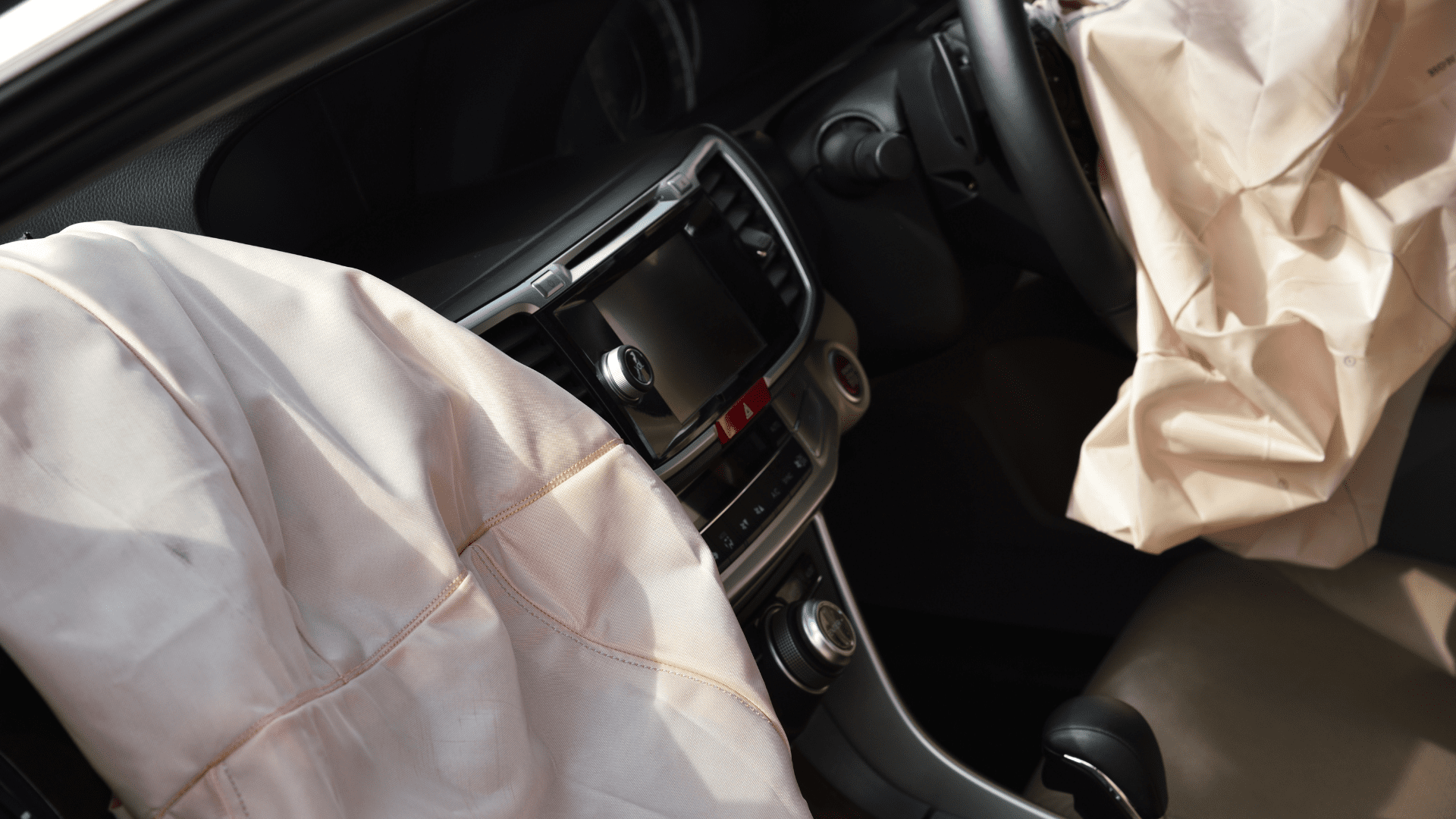Crash test dummies are something that most of us have heard of and know that they have something to do with the way that we determine the safety of vehicles. But how much do we really know and why should we care?
In Australia, the safety rating we apply to new cars comes directly from ANCAP (Australasian New Car Assessment Program)(1), who base their ratings on how badly a crash test dummy is damaged/injured in a crash scenario(2). Without these dummies, road safety research in Australia would look very different(3).
However, this does not mean that they are without fault. For example, a 2011 study(4) found that body types with female sex characteristics were 71% more likely to be injured in a crash while wearing a seatbelt than those with male sex characteristics, and that the lack of diversity in crash test dummies was likely a contributing factor.

In this blog, we will go over what crash test dummies are, how they are specifically used, what they can tell us, and their potential issues, all within the context of Australia.
What is a crash test dummy?
To put it simply, a crash test dummy is a replica of the human body made from materials that respond, like bone and flesh, either by displaying visible damage or information from digital sensors(5). This allows researchers to subject these test dummies to a variety of conditions and use the results to anticipate how a real human body would fare in similar conditions.
They can come in a variety of shapes and sizes to represent different demographics and can be built for specific crash/test types(6).
An example of this is ANCAP’s THOR (Test device for Human Occupant Restraint) and WorldSID (World Side Impact Dummy) crash test dummies(5). THOR is designed to measure front impact collisions, while WorldSID is equipped to better measure side impact collisions(5). Further, they have specific leg only forms that measure impact to a pedestrian struck on the right side of their body(5).
To get a better understanding of how the body moves in a crash and why crash test dummies work, check out our blog: What Happens to the Body in a Crash? The Physics.

There are also legislative outlines for what crash test dummies are suitable for which road safety research(7).
Car manufacturing companies can also conduct their own road safety research using crash test dummies(8). A positive of this is that more data improves all research, however, these companies have a clear potential bias that could affect the interpretation of results.
ANCAP uses eight dummies that are full body forms, as well as two other forms designed to represent pedestrian heads and legs(5).
When and in what vehicles are crash test dummies used?
Crash test dummies can be used in essentially all vehicles whenever road safety research is being conducted(6). Most commonly, ANCAP uses these dummies in cars, however they do also use them to assess the safety of other road users, including pedestrians and cyclists(9). ANCAP focuses on testing popular varieties of new cars(9).
Test dummies need to be recertified after a certain number of tests, for example the WorldSID dummy needs to be recertified after four side impact tests(10). The testing is so exact and rigid that it even has requirements for the position of the dummies, how they need to be clothed, and the temperature they need to be(10).

Additionally, they also use strips of masking tape with different coloured wet paint on key areas of the body on the dummy, such as the forehead, so that they can see all points at which certain body parts have made contact during the collision(11).
What crash test dummy research tells us
There is no one type of crash, and as such there’s no one type of crash test. If we again look at ANCAP, they undertake a variety of crash types, in different conditions, on different test dummies to formulate their rating(2). However, they do have specific set types of collision tests with strict outlines, including the speed of the vehicle, the size of what they are colliding with, and how full the fuel tank and other car consumables need to be to ensure that results are standardised(10).

They monitor a range of crucial injury points and types, and specifically assess for those(9). These include whiplash, head and neck injuries, abdomen, and limb injuries(9). Each factor is given a score which is then compounded and transformed into the five-star rating(2).
ANCAP has seven main tests that they conduct(9), below is an explanation of each one:
Full Width Frontal Test(9)
This test involves a head-on collision between a vehicle going at 50km/ph and a solid wall. Two female crash test dummies are used, one as the driver and the other as a rear passenger. This test allows them to assess how effective the restraints and air bags are.
Side Impact Test(9)
This test recreates a T-bone collision by having the car struck on the driver’s side at a 90-degree angle at 60km/ph. They use a motorised trolley with a deformable front that simulates the front of another car. They use an adult crash test dummy in the driver’s seat and have two child dummies representing a six-year-old and a 10-year-old in age-appropriate seats/restraints.
Far Side Impact Test(9)
This test again imitates a T-bone collision at a 90-degree angle, but on the side opposite of the driver. These side impact tests allow researchers to determine the risk to occupants when the opposite side of the vehicle to which they are situated is struck.
Oblique Pole Test(9)
This test simulates a common situation that occurs when a car runs off the road. This situation is where the car comes into contact with a fixed object at an angle other than a right angle.
In this test the car collides with it at a 75-degree angle travelling at 32km/ph, where a mental pole is aligned with the driver’s head.

Pedestrian Protection(9)
These tests aim to determine the risk to pedestrians and the likely head or leg injuries that they might incur from a vehicle traveling at 40km/ph. In these tests, they use the head and leg forms and collide them with the car at various points where they are estimated to have contact.
Whiplash Protection(9)
To determine the level of whiplash protection that a vehicle can provide, this test places the seat and relevant restraints from the car on a moveable platform that simulates a rear-end collision. In these tests they measure impact in g-force and conduct it at both 4.9g and 6.4g.
Frontal Offset Mobile Progressive Deformable Barrier Test(9)
This test recreates a head-on collision between two cars and again uses a trolley with a deformable front to replicate another vehicle. Both the trolley and the car are traveling at 50km/ph and the collision occurs to the driver’s side front half only. They have a male crash test dummy in the driver’s seat, a female one in the passenger seat, and two children aged six and 10-years-old in the back seat with age-appropriate restraints.
Crash test dummy demographic discrepancies
Despite changes to increase the variety of crash test dummies being used in road safety research here(12) and overseas(4), there are still vastly more body types than dummies available.
This presents significant issues for a few reasons, the first being people purchasing vehicles because they believe they are safe due to their rating, but the crash test dummies used to achieve that safety are not representative of the buyer and, therefore not accurate for them(4). The second is that the data collected from these collision tests are used to inform the development of new safety improvements and technology(13), this further skews safety towards those who are represented and away from those who are not(14).

Currently the vast majority of crash test dummies being used are based on European men(15), which is no surprise considering that ANCAP’s THOR is produced by an American company(16), however this clearly leaves gaps for women and children, and those of African, Asian, Polynesian, and Middle Eastern decent.
It’s easy to say that it’s not practical to have a crash test dummy to represent every single body type available, but that doesn’t mean that improvements can’t or shouldn’t be made.
Learn more about road safety in Australia
While crash test dummies may not be perfect, without them the face of road safety research would be unrecognisable. They allow us to better understand how the human body might behave in a collision and the type and severity of injuries that could be sustained, which in turn allows us to make better informed choices about the cars we choose.
To learn more about road safety and how to be a safer road user check out our programs: here
–
Get involved in the conversation by following us on:
(1) (2) (3) (4) (5) (6) (7) (8) (9) (10) (11) (12) (13) (14) (15) (16)


